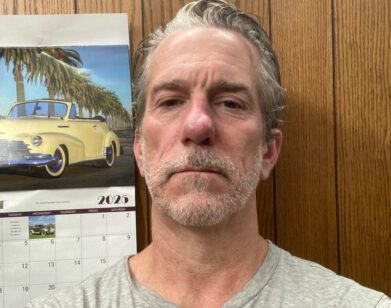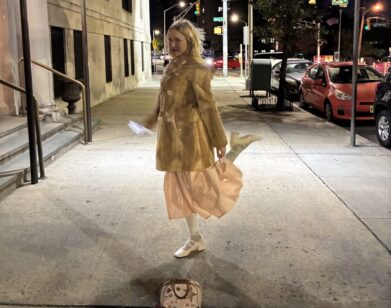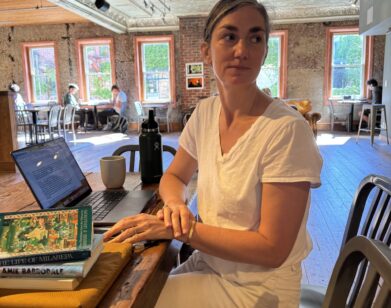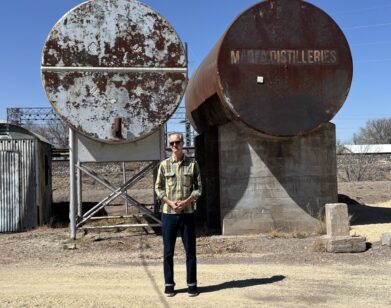Texting With Olivier Assayas About iPads, Affairs, and “Non-Fiction”

No human development has entered the realm of art with more dismay than the smartphone. The quantum leap of these 6-ounce magic slabs to basic human appendage has been fathomless and oft-ignored. While the human population grew ever-desirous of the miniature computers, in art, they were never seen as sexy, but rather disregarded—transcribed into movies, and all our world reflections, awkwardly and with shame. If a film didn’t omit the phones entirely, it dared not show its actors looking at them directly while texting, opting to observe from a distance or superimpose those texts in graphics tempered over the screen. In an Olivier Assayas film, however, these technologies are shown plainly, unadorned. In Assayas’s Personal Shopper, starring Kristen Stewart, his 35mm camera points directly into the ubiquitous dull glow of the iPhone screen. When the camera turns away, we anxiously await the screen’s return, lest we miss an incoming text.
In his latest film Non-Fiction, now playing at IFC in New York, writers and publishers descant over the “digital revolution” amidst a circle of romantic affairs. Readers are more likely to encounter a writer’s blog than their book. The bulk of modern consumption is short-form: tweets, posts, brisk hot takes. E-Books may be the answer for declining sales. But analog books are on the rise. The shifts aren’t linear and the future is hard to project. Assayas huddles these arguments and talking points into each corner and lets them unfurl over dinner. I wanted to learn more about how Assayas himself feels about it all, so I shot him a text. Below is the conversation in full, transcribed and cinematically rendered with a score by Marlene Dietrich. Slippery fingers led to occasional typos, which I opted to embrace.
———
The clock on Assayas’s phone reads 3:37 AM EST. A prior exchange of puppy GIFS appear onscreen.
AARON HUNT: You up?
OLIVER ASSAYAS: [Skull emoji.]
It’s 3am.
HUNT: I just saw Non-Fiction. I wanted to ask you a few things.
That cool?
ASSAYAS: K.
HUNT: Thanks.
HUNT: So
As I think is related by the film, our change today is happening faster but not necessarily for worse. Maybe we’re fumbling because of the quickened rate of change. But is there no change that’s singularly malignant and ‘ought to be reversed? Would it be possible to reverse it if it were as sweeping as the digital revolution?
ASSAYAS: I honestly think there’s a lot to be reversed and nowadays the worst seems to be gaining strength every day. We are a generation that will be held accountable for a lot of evil. I personally feel guilty because I am not involved politically the way I feel I should be. Maybe because I am a pessimist and don’t have much hope for the near future.
HUNT: I’ve seen critics use the word “slight” to slightly slant against the film’s overall power. This happens a lot with decidedly “lighter” films. I saw the same word used a lot in the reviews of Haneke’s Happy End. What do you think about that?
ASSAYAS: Lightness has been what I have been struggling to achieve in any movie I’ve ever made. Filmmaking suffocates from its own weight. That’s what I admire in impressionist painting. Capturing a ray of light or the nuances in the shade of a tree are enough to validate a work of art. Happy End didn’t seem slight to me. And as much as I deeply admire Haneke lightness has never been his goal.
HUNT: Have any of your films been provoked by questions you couldn’t answer? Have any of those questions been answered by the act of completing said film? Do you personally learn anything about life from making a film?
ASSAYAS: I do. Of course. Making a film gives you the opportunity to explore the world in dimensions you wouldn’t be aware of in your own writing. Your own fiction hadn’t taken you there. Actors give flesh, blood, and complexity to my characters in ways that always surprise me. The films have to end in a very different place from what I had anticipated.
[Sending long question in several short, fragmented texts rather than one:]
HUNT: There’re very specific details, things like Selena asking for her orange juice without the ice, that lend an un-obstructive sense of realism.
Do you find those are more often written, or found when there are actors and life to play with in the scene?
How is realism working here?
ASSAYAS: You can send everything in one text next time..
HUNTER: Ok.
ASSAYAS: I like to reinvent my films on the set. A little less of that is going on in Non-Fiction as it relies so much on dialogue. Approaching it, I thought there would be a lot of improvisation, but ultimately less than in my other films as the dynamics of comedy are very fragile and depending on the sort of timing you have to figure out in writing. As much as I can, I try to recreate the singularity of language.
HUNT: So the idea of the digital revolution, its effects, and its future are more delineated and left at the inscrutable paradox of The Leopard (things must change so that they can remain the same), than they are “answered,” but I feel the film does have a definitive stance on some of the questions it poses about relationships. For instance, Valerie & Selena don’t think their husband’s affairs are worth confronting. But when Leonard admits it to Valerie, they are the happiest together that we’ve ever seen them in the film. What does that say?
ASSAYAS: I don’t take seriously the notion of the monogamous couple. I have no patience for that. Neither have I any patience for the modern moralizing of sexual relationships. I’m happy with desire being complex, destructive, and both dark and playful, alternately. In any case it’s an area I don’t feel compelled to be accountable for, nor others be accountable to me.
HUNT: Can you talk about the film’s general perspective of affairs. Why must they feel lighter and lighter-in-consequence in the context of Non-Fiction?
ASSAYAS: I’m bored with the pathos of sexual relationships. Both in real life and in movies. Count me out.
HUNT: Ok. But I’m struggling to draw a line between the themes of contemporary change and the romantic affairs/double lives of the central characters. Is Non-Fiction saying relationships have also evolved into something non-linear, or is it saying they’ve always been this way and will remain?
ASSAYAS: Affairs don’t change much. Desire and sexual strategies haven’t evolved much these last few centuries. Eventually instant messaging, or various contemporary devices, can be more efficient tools than letters of old. Who knows what Sade or Valmont or Lovelace would have done with text messages. But still, it’s an empowerment of the same.
HUNT: Many scenes are sort of book ended harshly with the slam of a door, a sharp line, or a quick camera move, others roll off more gently, but I was always struck by the emphasis of each scene’s close. What’s going on here?
ASSAYAS: I like sharp cuts to end scenes, so the viewer may feel frustrated, but I am convinced it’s much better than to have him bored. Time is inside the scenes not at the opening and end.
HUNT: The camera is never bound to one character, it just as soon diverts from who it follows to the trail of another. we’re not always catching a line or reaction on screen. How do you decide what to show and not?
ASSAYAS: I usually shoot long takes, and especially when I am filming extended dialogue scenes I tend to cover myself more than I usually do when I am filming, for instance, an action scene. Hence a film like Non-Fiction tends to take its final shape in the editing room where I can emphasize this or that dimension of the scene. Play on this or that nuance. Of course the actors’ input becomes essential as my choices will be defined by their energy or their relevance. When I am filming I am never sure what will end up in the finished film. Again a film like Non-Fiction tends to be a bit more controlled than my usual.
HUNT: The film makes no judgment about the digital format. People read more than ever, but differently, and less books than ever before. They are, generally, more likely to look at a screen than a page. Do you have any personal opinions or ideas about this that weren’t appropriate for the film?
ASSAYAS: I read real books, but I have no issues with anybody reading them on a tablet. I can’t see a problem there. I think we are all self-taught and we construct ourselves in original complex ways that are profoundly different for every individual. What I deplore is the shortening of our attention span, our growing misunderstanding of the past, the way we detach ourselves from poetry.
HUNT: So many films neglect cell phones if they can. You don’t mind pointing your camera right at them, and revolving your drama and ideas around them. Shooting on film feels at odds with that modern embrace. Maybe embrace is the wrong word?
ASSAYAS: In my movies, I represent the world I live in. In that world, mine, yours, our readers’, smartphones, communication devices, have become not only useful, but important, addictive, and major factors of change in modern societies. I take it into consideration as a meteorological event. I have no grasp on it, it has happened to us, for better or for worse, I’m in favor of “embracing” the best and avoiding the worst.
HUNT: To what extent do you indulge in it all? Have you found yourself helpless to using it more over time?
ASSAYAS: Yes. How could that not be?
HUNT: True. Get some sleep.
ASSAYAS: [Skull emoji.]






